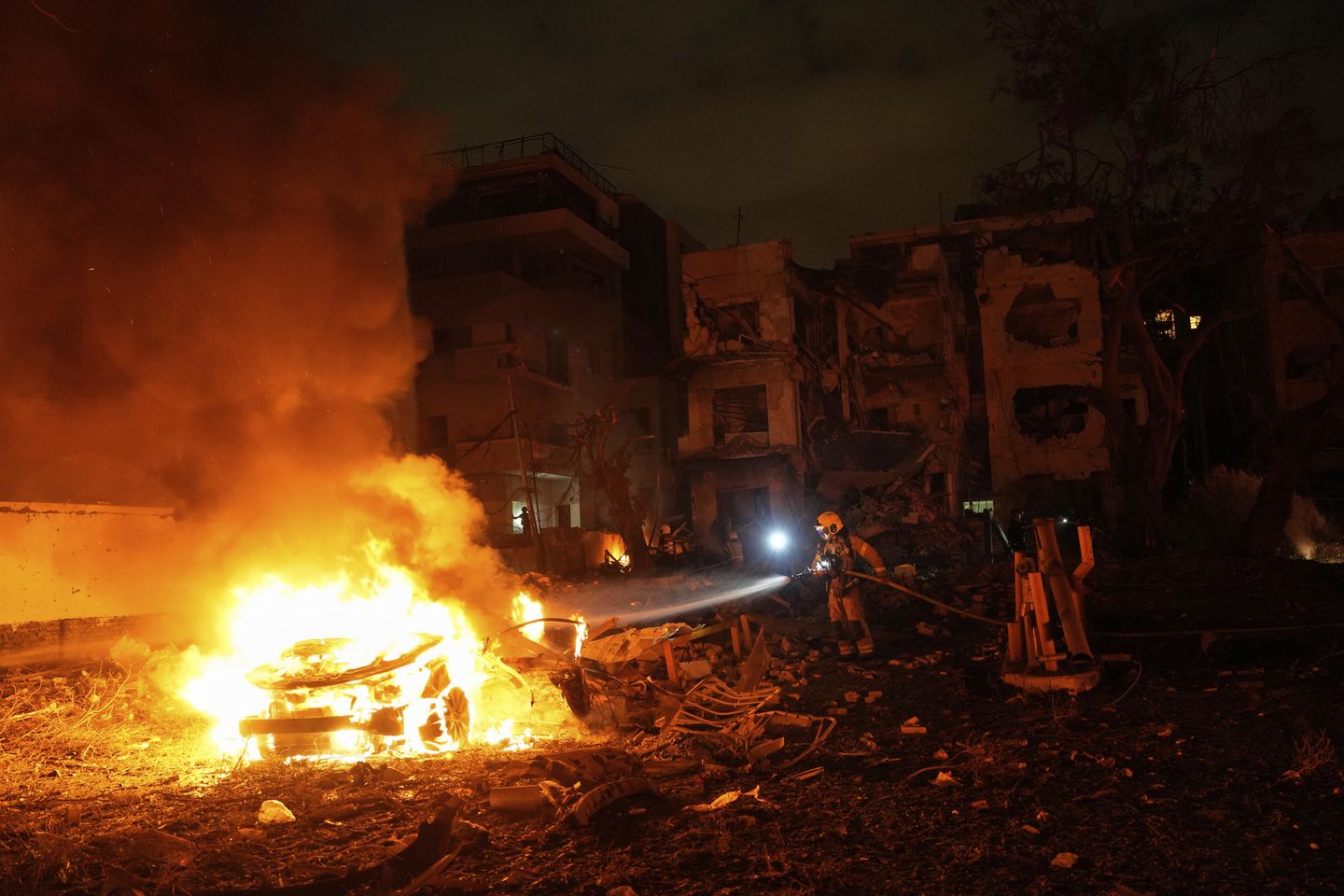
SEOUL, South Korea — North Korea was a key supplier of Iran’s armory of ballistic missiles, but it is Pyongyang’s know-how in defensive facility design that could be Israel’s undoing.
While Iran and Israel exchange barrages across the Middle East’s skies, deep underground, North Korea-style bunkered fortifications are defying Tel Aviv’s aerial offensive.
If the U.S. doesn’t assist Israel with its niche “bunker buster” bomb deep-penetration strike capabilities, a retired South Korean special forces general says the options Tel Aviv faces in cracking Iran’s fortified nuclear facilities range from stark to “unthinkable.”
Iran’s situation is hardly ideal, either.
Lacking an air force, and with its air defenses massively degraded, it is being pummeled by Israeli warplanes.
And Iran’s allies in the so-called CRINK — shorthand for the anti-Western axis of China, Russia, Iran and North Korea — are not rising to Tehran’s defense.
SEE ALSO: Top House Democrat warns Trump to seek congressional approval before joining Israel’s war on Iran
Underground issues
During the 1950-53 Korean War, North Korea, like Iran today, lacked air defenses over most of its territory. It was bombed to powder by U.S. aircraft.
Post-war, extensive facilities were built deep underground, from Pyongyang’s subway, designed to double as a public bomb shelter, to air bases tunneled into mountainsides.
In 2005, Myong Lyu Do, a leading expert in underground facilities, was invited to Iran to work alongside the Republican Guard on a project to fortify nuclear facilities North Korea-style, the Journal reported.
The reported result was six miles of underground halls, connected by tunnels. The entire network is protected by blast-resistant walls, floors and ceilings.
Widespread analysis agrees that the only bomb able to smash into Iran’s Fordo deep-underground nuclear site is the 30,000-pound GBU-57 Massive Ordnance Penetrator, also known as a “bunker buster.”
SEE ALSO: Trump gives Iran two weeks to accept nuclear deal or face U.S. military strikes
The only aircraft that carries it is the B-2 stealth bomber. And only the U.S. Air Force fields the bomb and the bomber.
Given Fordo’s mass of defensive rock and concrete, one bomb might not do the job, necessitating a lineup of B-2s making multiple runs.
That could explain why the Israeli air force is concentrating so heavily on Iran’s battered air defenses: To clear an aerial corridor granting the B-2s safe passage.
But if Washington decides against a strike, Tel Aviv faces difficult decisions.
“Without U.S. support, Israel cannot, on its own, destroy those facilities from the air,” said Chun In-bum, who formerly led Seoul’s Special Warfare Command. “The only option they have is to send in troops or do the unthinkable — use Israeli nuclear weapons.”
Since the 1976 Entebbe raid — led by Israeli Prime Minister Benjamin Netanyahu’s brother, Yonatan (“Yoshi”) — Israel’s vaunted commando arm has earned a reputation for daring operational successes.
And Tel Aviv’s military intelligence, the Mossad, is globally respected and feared for its expertise in assassination and sabotage.
A precedent exists.
In an operation that remains shrouded in mystery, Israeli commandos may have laser-identified targets for air strikes on a North Korea-designed nuclear reactor in Syria in 2007 or undertaken ground attack and/or damage assessment missions.
The target, which in 2009 the International Atomic Energy Agency confirmed was a nuclear facility, was destroyed. Israel confirmed the operation in 2018.
However, that facility was above ground and Syria lies adjacent to Israel. Iran is farther away than Syria.
And while Israeli commandos have battled Hamas underground in Gaza, breaching, fighting through and setting charges to collapse Iran’s vast labyrinth — almost certainly heavily guarded — presents colossal levels of risk.
“If you send in troops on the ground, there will be a high price,” warned Mr. Chun, the retired general, whose unit practices “decapitation strikes” on North Korea’s command-and-control centers. “I would not want to be in charge, as a lot of my men are going to be killed.”
He gave any such operation a 50-50 chance of success. Mr. Netanyahu, a veteran commando himself, is likely well briefed.
Tactical nuclear strikes on the facility would not decimate Israel’s best troops, but would present very different perils.
“There would be a lot of fallout,” Mr. Chun said, referring to radioactive dust clouds, not global public opinion.
Missile mates
According to a report in the National Security Journal this week, two of the three classes of ballistic missiles Iran fired in its early barrages in response to Israel’s offensive, were “souped up” models of North Korea’s Rodong (also spelled Nodong): the Emd and the Ghadr.
Pyongyang supplied Iran not only with 150 Rodongs, but also with technicians who assisted with technical upgrades to their range and firepower and in the construction of a missile plant, the Journal reported.
It stated, however, that the third class of missile appears to be solid fueled, “and there is no evidence that it came from North Korea,” indicating Iran now possesses those capabilities.
Chad O’Carroll, CEO of specialist media NK News, said he thinks Iran–North Korea technical cooperation has tailed off since the early-mid 2000s.
“I don’t see very active cooperative relations anymore,” he said. “If you look at Iranian missiles, they started becoming a lot more sophisticated some years ago and the design similarities started to disappear.”
Some Israelis “say loads of cooperation is going on,” Mr. O’Carroll said, “but they won’t specify.”
He added that North Korea’s border closures during the COVID-19 pandemic halted virtually all incoming and outgoing travel for almost five years.
The Journal hedged over whether North Korea had supplied uranium-enrichment technologies to Iran. Mr. O’Carroll was similarly cautious, saying only that footage from Pyongyang state media of leader Kim Jong-un wandering through a hall of centrifuges suggested possible cooperation, given optical similarities.
CRINK clunks?
The extent of Tehran’s ballistic missile stockpile is unknown, but a combination of heavy use and Israeli destruction means it could soon run low.
While Israel also faces burn-through, it may be able to shore up its supplies from the U.S. Iran may not, as the shortcomings of the “CRINK” become clear.
Beijing, Moscow and Pyongyang have offered verbal and diplomatic support, but little else.
Russia, heavily engaged in its war against Ukraine and a user of Iranian drones, has not repaid Tehran with weapons.
Social media accounts suggesting Chinese cargo aircraft has landed in Iran have been disproven by analyses of air-tracking websites. Beijing, which has not engaged in combat since 1988, is customarily cautious about global conflicts.
North Korea is supplying Russia with arms, but, due to U.S. control of the seas, is unlikely to ship to Iran. No overland supply has been seen.
“China is providing some components for ballistic missiles to North Korea, but won’t provide means of delivery of a finished missile,” said Yang Uk, a security expert with Seoul’s Asan Institute. “Though China does not entirely respect the UN sanctions regime, they are trying to look like part of it.”
Experts say CRINK is a transactional, anti-Western partnership of convenience, rather than of shared values.
Communist-led China is deeply reliant on global trade, and its regional expansionism is sub-kinetic. Nationalistic Russia, isolated from Western trade, is engaged in military, neo-imperialist expansionism.
North Korea is a de facto hereditary monarchy, while Iran is a theocracy.
“As far as totalitarianism is concerned, Iran and North Korea may look similar, but the bases of their totalitarianism is different,” said Kim Jeong-ro, vice president of Seoul-based NGO Council for Diplomacy on Korean Reunification. “I don’t see any common ground between Islamic beliefs and Kim Il-sungism.”
North Korea offers the Islamic Republic one key lesson, Mr. O’Carroll says: Nuclear arms represent “the ultimate insurance policy” against external attack.












